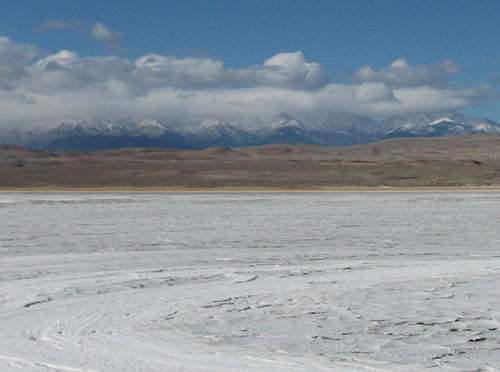Morella Corporation Limited (ASX:1MC) has updated its upcoming drill targets following the successful completion of geophysical exploration activities completed in the southern part of the Fish Lake Valley Lithium Project in Nevada, USA.
“These MT results along with the previous seismic work gives us full confidence in the drill targets,” Managing Director, James Brown, said.
“The extra MT lines demonstrates continuity along strike and width across our claim area. We now have the framework in place to allow the next phase of drilling to potentially define a Mineral Resource will be a significant step forward for Morella.”
Magnetotelluric Survey
Morella commissioned a further Passive Seismic and Magnetotelluric (MT) Survey of the Project along an additional two east-west transects and one north-south transect in the south of the Project, in order to identify sub-surface conductivity anomalies that could be caused by brine accumulations with potential to host Lithium mineralization.
Analysis and interpretation has been completed which identified prospective drilling targets with the goal to progress to a Mineral Resource.
The December MT Survey was commissioned following the successful geophysical exploration programme conducted early last year.
The MT survey work was undertaken by US-based Zonge International Inc. Perth-based geophysical consultants, Resource Potentials, completed QA/QC and inversion modelling of the MT survey data. Interpretation and final reporting are ongoing.
The modelled MT resistivity cross sections from the December MT Survey reinforce and expanded upon modelling results from the March MT Survey. In particular, a very high conductivity anomaly is present in the southern most MT survey line resistivity model cross section and is centred approximately 1,000m depth below surface
This anomaly is likely a continuation of an anomaly identified during the March MT Survey, which is interpreted to be fault bounded, and may be caused by Lithium-brine, saline groundwater and clay- ash deposits.
A strong MT conductivity anomaly appears to continue to the west outside of the area covered by the MT survey lines. The overall basin structure appears to be deeper within the central- to-eastern part of the MT survey area before shallowing on the easternmost side. The northernmost E-W oriented survey line appears to show a conductivity west-dipping layer at depth.
The central N-S oriented survey line indicates that the deep high conductivity layer is continuous across all the E-W survey lines and may be closed-off to the south by an interpreted fault structure.
The December MT Survey has expanded on work previously completed within the Project. The 2D resistivity inversion model cross sections generated from these MT surveys indicate that the high- conductivity anomaly identified during the March MT Survey, which may be caused by brine hosting Lithium in solution, appears to be closed-off to the south and east, but potentially open to the north and west.
Drillhole targets originally defined from the March MT Survey have been expanded to facilitate development of a potential Mineral Resource.
The next steps are:
• Award a drilling contract with the drill program aimed at providing brine samples from depth.
• Enter final stages of permitting, being conducted by US-based McGinley and Associates Inc on behalf of the company.
• Consider 2D reflection seismic to further calibrate the Passive Seismic and MT results and help identify key basin structures and layers to assist drill targeting, hydrogeological modelling and potential resource definition.
For further information please visit: https://www.morellacorp.com/












